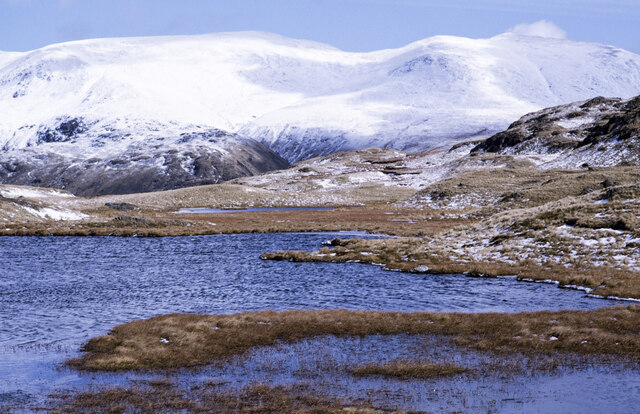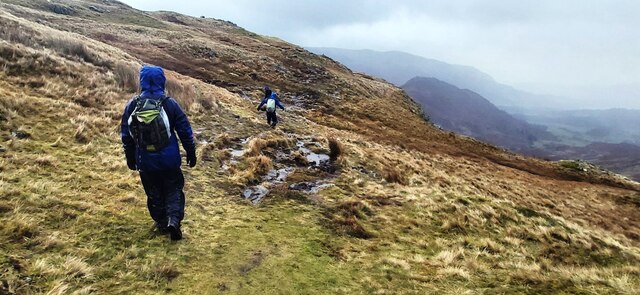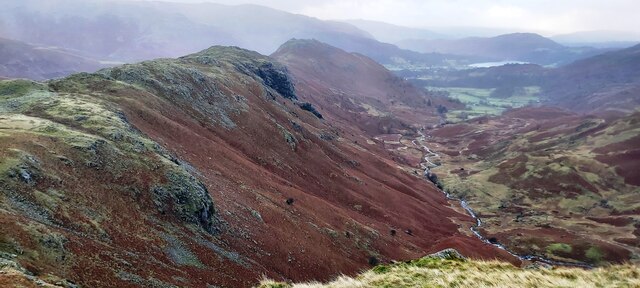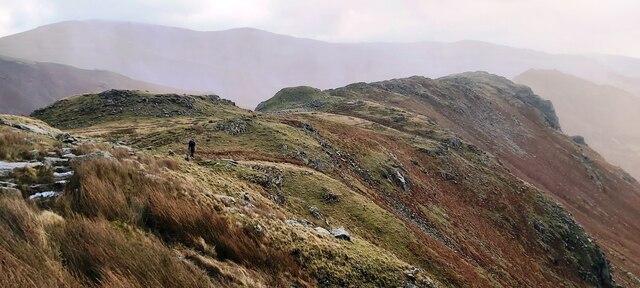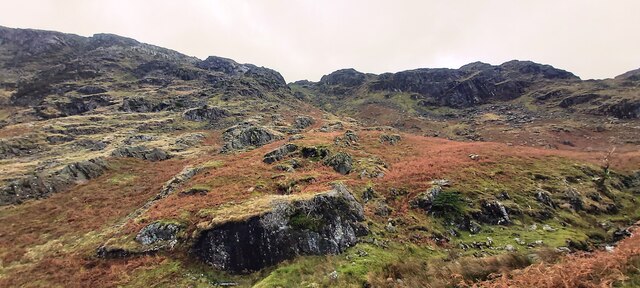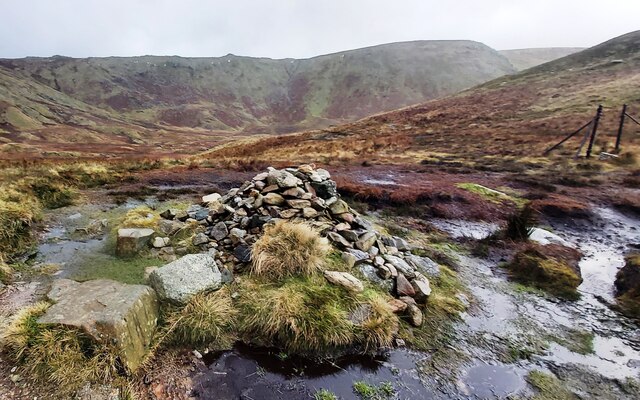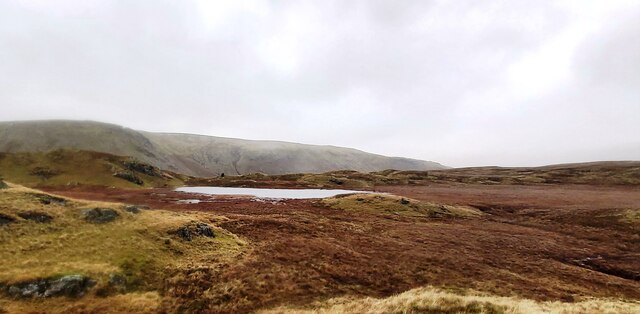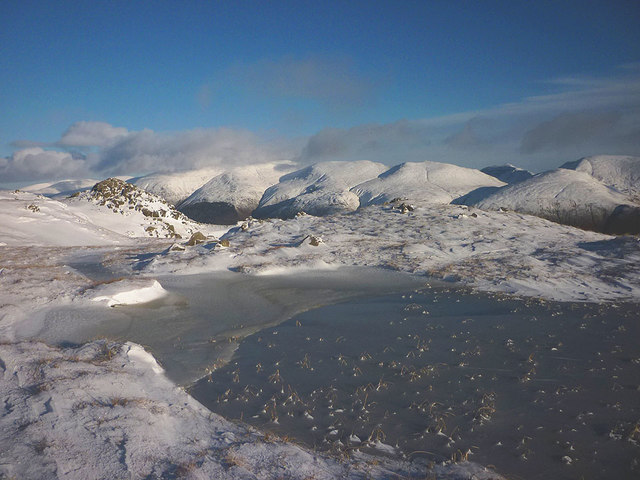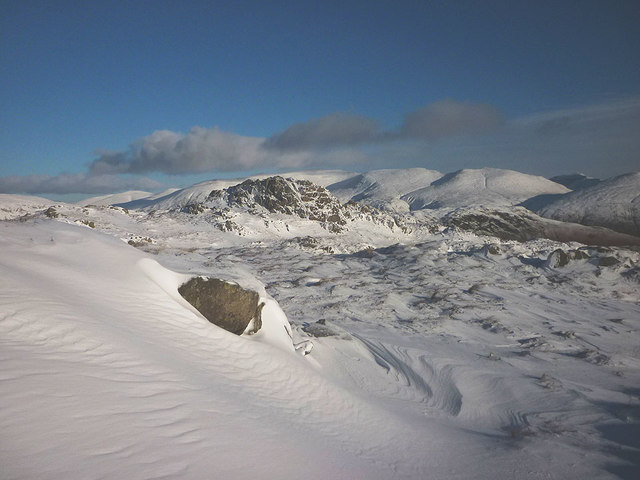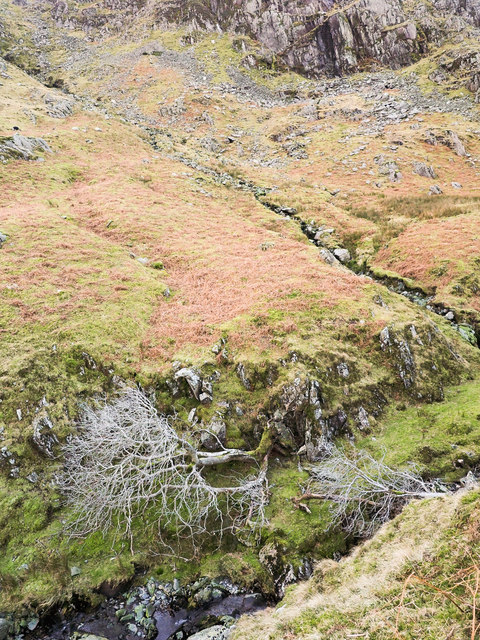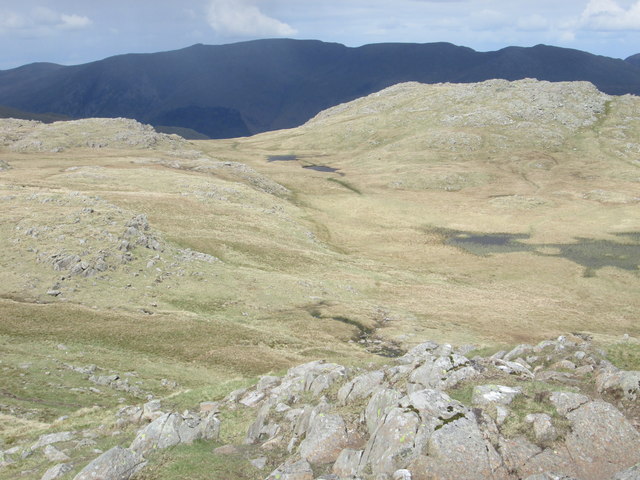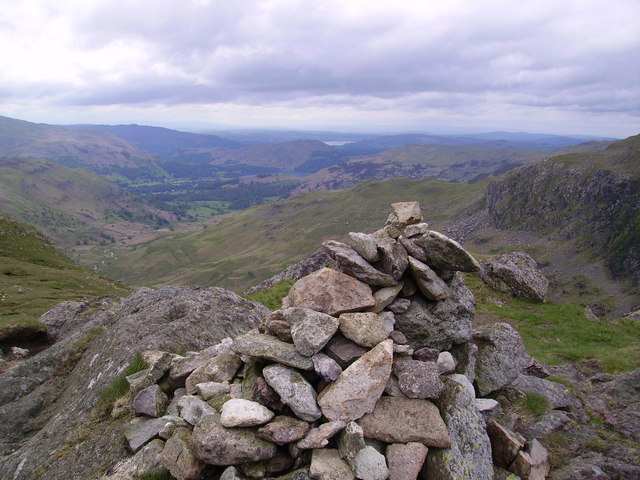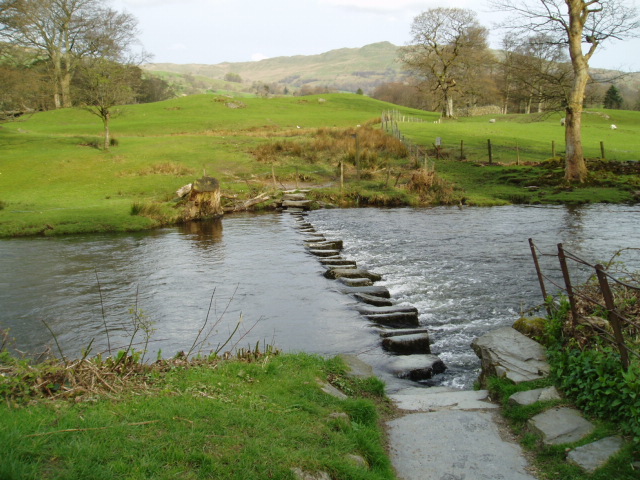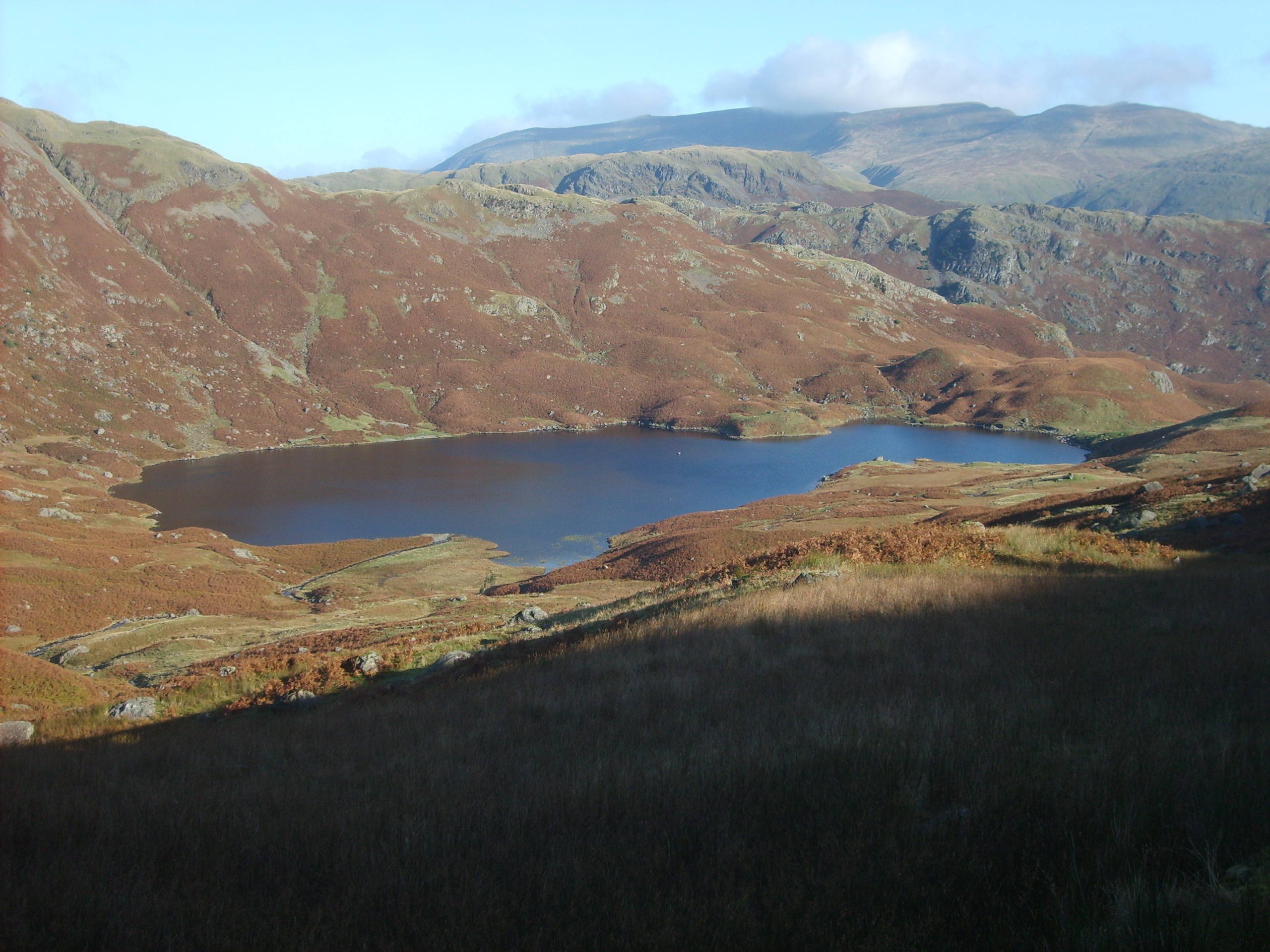Calf Crag
Hill, Mountain in Westmorland South Lakeland
England
Calf Crag
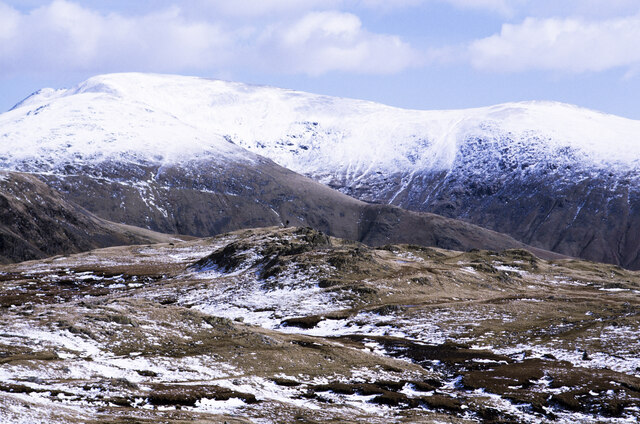
Calf Crag is a prominent hill located in the county of Westmorland, in the Lake District National Park, England. It is part of the Central Fells region and stands at a height of 537 meters (1,762 feet).
Situated near the popular tourist town of Grasmere, Calf Crag offers breathtaking panoramic views of the surrounding landscape. The hill's distinctive shape and rugged terrain make it a favorite among hikers and outdoor enthusiasts.
The ascent to Calf Crag can be approached from various directions, with routes starting from nearby towns such as Stonethwaite, Borrowdale, and Grasmere. The most common route begins at Steel Fell and follows a well-marked trail that leads to the summit.
Once at the top, visitors are rewarded with stunning vistas of the surrounding fells, including the famous Helm Crag, High Raise, and the Grasmere valley. On clear days, it is possible to see as far as the Irish Sea and the Isle of Man.
Calf Crag also boasts a diverse range of flora and fauna. The hill is home to several species of birds, including buzzards, peregrine falcons, and red kites. In spring and summer, the slopes come alive with colorful wildflowers, adding to the area's natural beauty.
Overall, Calf Crag is an excellent destination for those seeking a challenging yet rewarding hike, offering stunning views and a chance to immerse oneself in the natural splendor of the Lake District.
If you have any feedback on the listing, please let us know in the comments section below.
Calf Crag Images
Images are sourced within 2km of 54.484513/-3.0795095 or Grid Reference NY3010. Thanks to Geograph Open Source API. All images are credited.
Calf Crag is located at Grid Ref: NY3010 (Lat: 54.484513, Lng: -3.0795095)
Administrative County: Cumbria
District: South Lakeland
Police Authority: Cumbria
What 3 Words
///gurgling.branded.than. Near Ambleside, Cumbria
Nearby Locations
Related Wikis
Calf Crag
Calf Crag is a fell in the English Lake District, on the eastern side of the High Raise massif. == Topography == The spine of the Central Fells runs on...
River Rothay
The Rothay is a spate river of the Lake District in north-west England. Its name comes from Old Norse and translates literally as the red one. This has...
Tarn Crag (Easedale)
Tarn Crag is a fell in the Central Fells of the English Lake District. Strictly the name refers only to the rock face looking down upon Easedale Tarn,...
Easedale Tarn
Easedale Tarn is a tarn in the centre of the English Lake District, about two miles west of the village of Grasmere. It lies in a hollow between Tarn Crag...
Nearby Amenities
Located within 500m of 54.484513,-3.0795095Have you been to Calf Crag?
Leave your review of Calf Crag below (or comments, questions and feedback).
